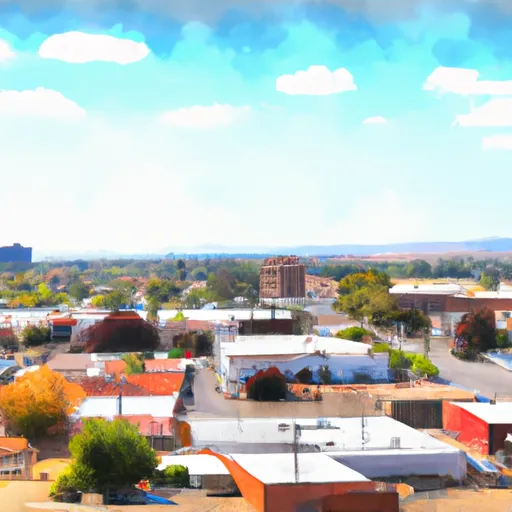-
 Snoflo Premium
Snoflo Premium
Get unlimited access to all our content
With no Ad interruptions! - Start Your Free Trial Login with existing account
Kingsburg
Eden Index
Climate
8.8
•
Recreation
2.2
•
Community
2.8
•
Safeguard
5.0/10

Kingsburg, California is a charming city located in the San Joaquin Valley. It experiences a Mediterranean climate characterized by hot, dry summers and mild, wet winters. Summers in Kingsburg are typically hot with temperatures averaging around 90°F (32°C) in July and August. Winters are cool and wet, with average temperatures in December and January reaching around 55°F (13°C).
The hydrology constituents in Kingsburg largely depend on the Kings River, which flows nearby. The river provides the city with water for agricultural activities and recreational opportunities. The Kings River is known for its excellent fishing, particularly for salmon and steelhead. It also offers activities such as kayaking, boating, and swimming.
In addition to the Kings River, outdoor enthusiasts can enjoy the nearby Sierra Nevada Mountains. These mountains provide numerous opportunities for hiking, camping, and wildlife observation. Sequoia and Kings Canyon National Parks are within driving distance, allowing visitors to explore stunning natural landscapes, including giant sequoia groves and breathtaking waterfalls.
Overall, Kingsburg offers a pleasant climate, access to the Kings River, and proximity to the Sierra Nevada Mountains, making it an ideal destination for outdoor recreation enthusiasts.
What is the Eden Index?
The Snoflo Eden Index serves as a comprehensive rating system for regions, evaluating their desirability through a holistic assessment of climate health, outdoor recreation opportunities, and natural disaster risk, acknowledging the profound impact of these factors on livability and well-being.
Climate Health Indicator (CHI): 8.8
Kingsburg receives approximately
298mm of rain per year,
with humidity levels near 73%
and air temperatures averaging around
18°C.
Kingsburg has a plant hardyness factor of
9, meaning
plants and agriculture in this region tend to thrive here all year round.
By considering the ideal temperature range, reliable water supplies, clean air, and stable seasonal rain or snowpacks, the Climate Health Indicator (CHI) underscores the significance of a healthy climate as the foundation for quality living.
A healthy climate is paramount for ensuring a high quality of life and livability in a region, fostering both physical well-being and environmental harmony. This can be characterized by ideal temperatures, reliable access to water supplies, clean air, and consistent seasonal rain or snowpacks.
Weather Forecast
Streamflow Conditions
Tulare-Buena Vista Lakes
Area Rivers
Tulare-Buena Vista Lakes
Snowpack Depths
Tulare-Buena Vista Lakes
Reservoir Storage Capacity
Tulare-Buena Vista Lakes
Groundwater Levels
Recreational Opportunity Index (ROI): 2.2
The Recreational Opportunity Index (ROI) recognizes the value of outdoor recreational options, such as parks, hiking trails, camping sites, and fishing spots, while acknowledging that climate plays a pivotal role in ensuring the comfort and consistency of these experiences.
Access to outdoor recreational opportunities, encompassing activities such as parks, hiking, camping, and fishing, is crucial for overall well-being, and the climate plays a pivotal role in enabling and enhancing these experiences, ensuring that individuals can engage in nature-based activities comfortably and consistently.
Camping Areas
| Campground | Campsites | Reservations | Toilets | Showers | Elevation |
|---|---|---|---|---|---|
| Pine Flat Rec Area | 52 | 586 ft | |||
| Choinumni | 36 | 557 ft |
Nearby Fishing
Nearby Ski Areas
Catastrophe Safeguard Index (CSI):
The Catastrophe Safeguard Index (CSI) recognizes that natural disaster risk, encompassing floods, fires, hurricanes, and tornadoes, can drastically affect safety and the overall appeal of an area.
The level of natural disaster risk in a region significantly affects safety and the overall livability, with climate change amplifying these risks by potentially increasing the frequency and intensity of events like floods, fires, hurricanes, and tornadoes, thereby posing substantial challenges to community resilience and well-being.
Community Resilience Indicator (CRI): 2.8
The Community Resilience Indicator (CRI) recognizes that education, healthcare, and socioeconomics are crucial to the well-being of a region. The CRI acknowledges the profound impact of these elements on residents' overall quality of life. By evaluating educational resources, healthcare accessibility, and economic inclusivity, the index captures the essential aspects that contribute to a thriving community, fostering resident satisfaction, equity, and social cohesion.

